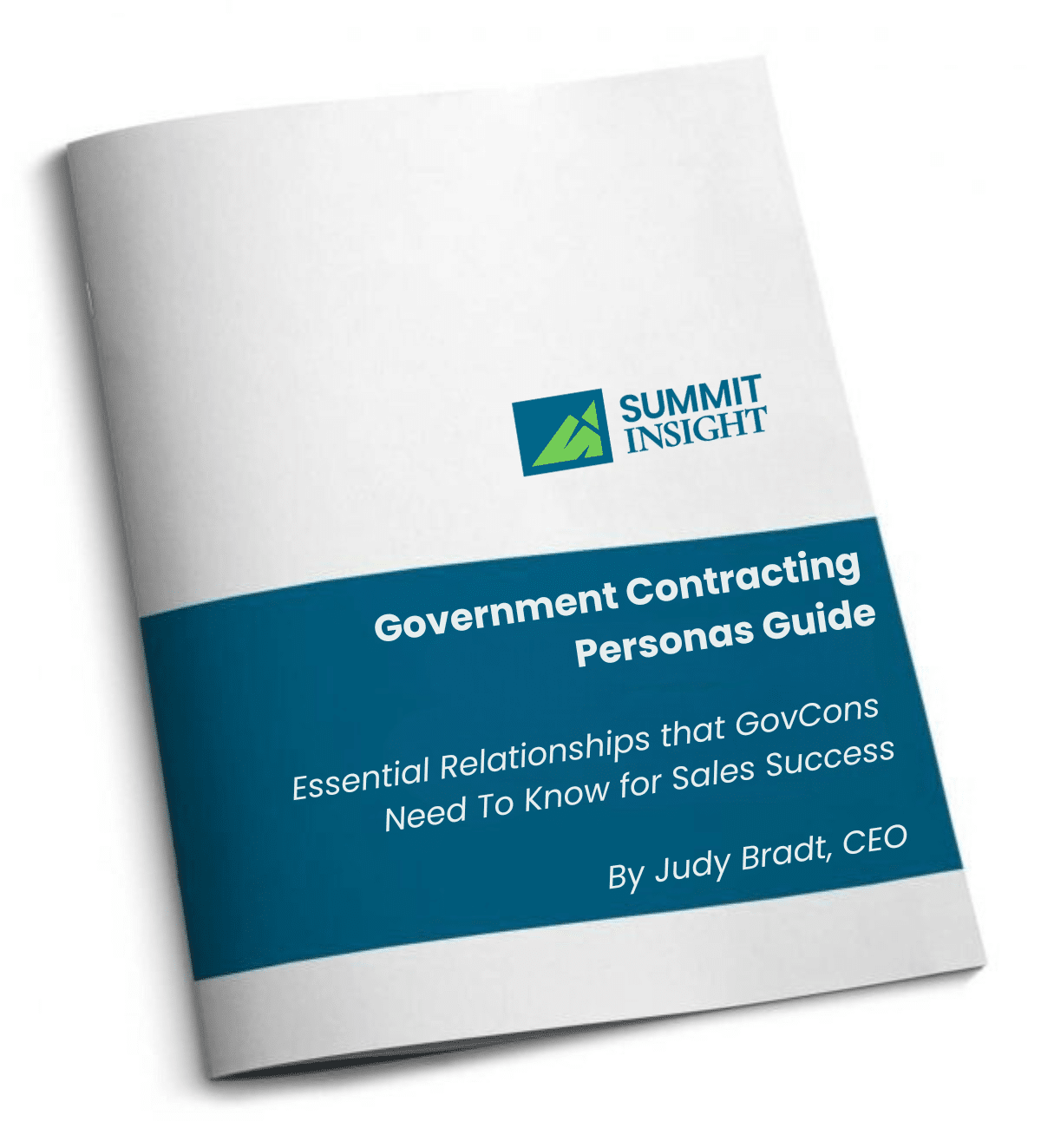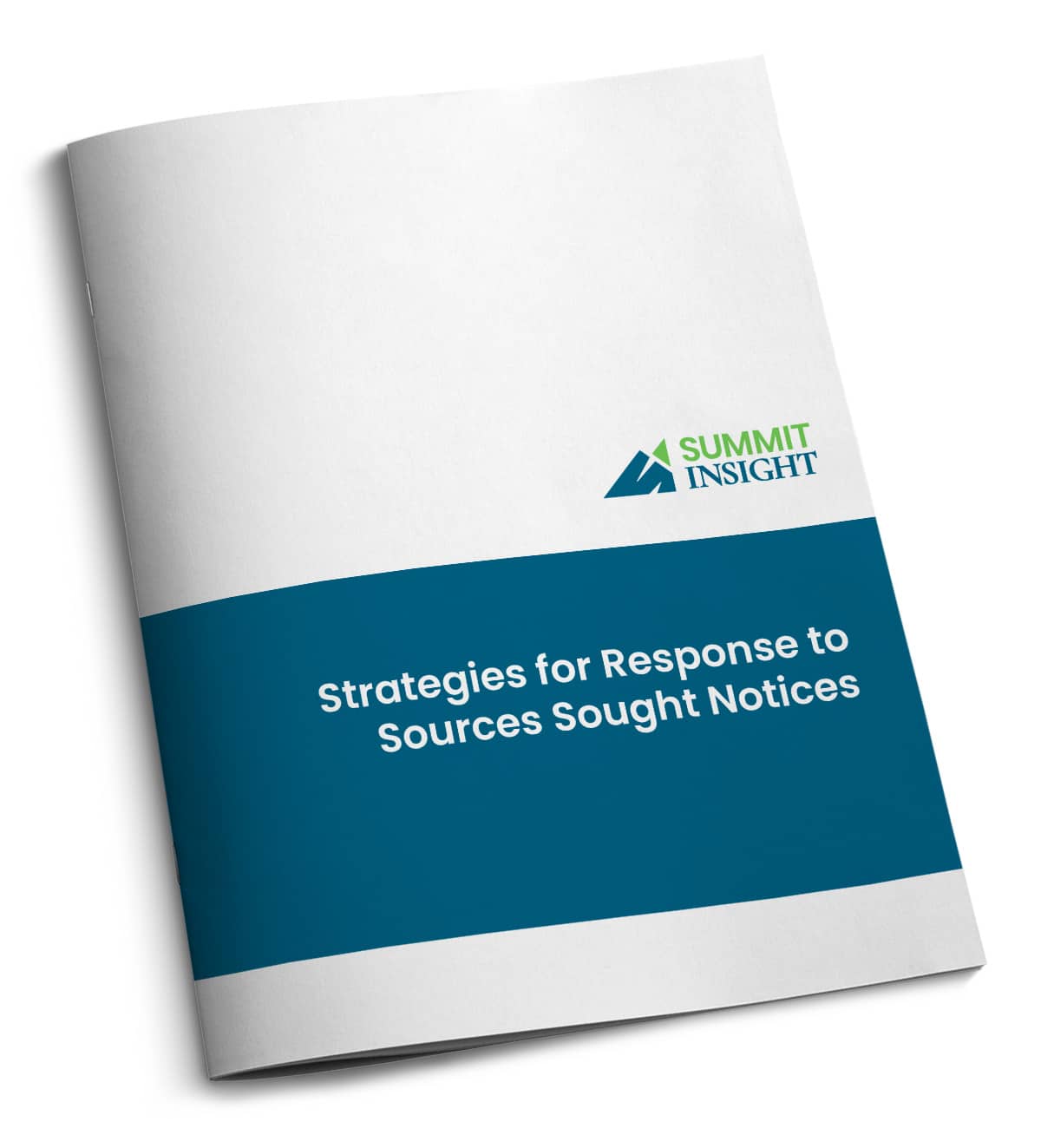Introduction
If you could win a government contract without endless cycles of expensive (and often losing) bids on opportunities, would you do it?
The good news is that you can secure government contracts more easily without relying solely on complex bidding processes. Instead of depending entirely on Requests for Proposals (RFPs), successful contractors strategically build relationships, secure micro-purchases, and position themselves for sole-source opportunities. This article explores the best ways to win government contracts and break free from the exhausting bid-and-hope cycle.
Bidding on RFPs is not the only—or even the best—way to get Federal contracts. Too many companies that ramp up their bid activity quickly discover low win rates and high costs that drive them out of the Federal arena before they can even get started.
Why Bidding Alone Won’t Guarantee Government Contract Success
A “bid-only” strategy comes with significant challenges…and risks.
- Long sales cycles: The procurement process for big projects can take months or even years before a contract is awarded. That means you’ve got to have enough working capital to keep operating, marketing, and selling until you win…oh, and until you perform, and until the government pays that first invoice.
- Unpredictability: Awards for major contract vehicles like OASIS and CIOSP-4 have experienced delays of months or years. Contractors need backup plans in case of Federal government shutdowns or agency policy shifts that can temporarily stop work or terminate contracts for convenience.
- High Proposal Costs: The cost of preparing a fully compliant proposal for a major bid can add up to well over $65,000 – whether you win or lose, which takes us to….
- Low Win Rates: The average win rate for companies with less than 10 years’ experience in the Federal arena is only 20%. So before you get into the game, do the math: add the cost of your four losing proposals to the cost of the one winner. 4 times $65,000 is $260,000. What did you say your profit margin was on that project if you win?
- Competitive Barriers: Incumbent firms – large and small – have significant advantages over newcomers because of…
- Relationships! Government contracting is the ultimate relationship game. There’s no such thing as selling to “the government.” Winners figure out fast that they’re doing business with people – a lot of people – and they get to know them long before requirements hit the street.
✅ For small businesses looking to make government contracting easier, the solution is to build relationships and pursue alternative contracting paths before engaging in full-scale bids.
✅ This is effective because a vendor’s superlative performance on small projects or orders can help buyers develop requirements definitions and make it easier to choose vendors they trust once competition begins. Even better: who engage with buyers on micro-purchases and simplified acquisitions can generate actual revenue and past performance that pave the road to larger wins.
Proven Strategies for Small Businesses to Win Government Contracts
1. Build Relationships with Federal Buyers
Speaking of relationships…you’ve heard me say it for years: Federal contracting is a relationship-driven business. Every successful government contractor knows that. Sooner or later, they all figure out what I’m going to share right now.
Who to Engage:
- Small Business Specialists (OSDBUs & SBLOs): They help you navigate the procurement process; they can advocate for you, including encouraging set-asides. And the more homework you’ve done, the more helpful they’ll be.
- Contracting Officers (COs) & Contracting Specialists (CS): They administer the acquisition process, conduct market research, and award and manage contracts.
- End Users: Including the Program Managers, as well as the Contracting Officer’s Representative (COR): they define agency needs and influence vendor selection. They can advocate for solutions that align with their goals…and are stuck with the consequences, for good or ill, of choosing the winning vendor.
- Industry: Primes – large and small – including incumbents and competitors. Partnering with experienced firms increases credibility and opportunities.
How to Build Relationships: Quick Tips
- Attend industry days, agency-hosted events, and networking conferences.
- Research your agency contacts before you call them, including on LinkedIn.
- Craft consistent messaging centered on your Best Values,so you always bring content and ideas that match their priorities and goals.
- Regularly engage agency contacts through email updates, capability briefings, and site visits.
- Provide value by offering insights on industry best practices and innovative solutions.
- Solve, don’t sell. Always be able to finish the sentence, “How I can help you…”, including ideas for small solutions worth less than the $10,000 micro-purchase threshold When you ask, “How can I help you?” you’re giving them homework. They have enough to do. It’s not their job to solve your problems. It’s the other way around.
The big revelation my clients discover, time after time, is this: “They’re just people.” They want to deliver the mission, serve the public, keep their jobs, take care of their families. Get to know them as people. It makes all that calling and follow up something you both genuinely look forward to (instead of dread).
How Do I Call A Federal Buyer?
You’ll love the Government Contracting Personas Guide! Discover:
- Who your buyer really is
- What’s important to them
- Why they’ll take your call, and
- Who to call first (Pro Tip: that depends!)
2. Leveraging Micro-Purchases and Simplified Acquisitions
Now that you’re getting to know people, and they’re getting to know you and like you, and you’re always the helpful person with something that makes their day better…what problems can you solve for them when they’ve got a budget of less than $10,000? Or under $250,000?
One of the best-kept secrets for making government contracts easier is targeting micro-purchases and simplified acquisitions. These contracts fall below certain thresholds and often require minimal competition.
Government buyers can award contracts that fall below the
- Micro-Purchase Threshold ($10,000 or less): by awarding contracts with minimal, and sometimes no, consideration of competitors; and the
- Simplified Acquisition Threshold ($250,000 or less), by using streamlined procedures with limited competition.
Winning these smaller contracts helps small businesses (and all businesses) establish credibility and build trust…which makes it easier to secure larger opportunities in the future.
These small contract awards pack an outsized punch of credibility. First of all, you get more than money in the bank (which is always a big deal): that little contract means you now have Past Performance! Past Performance begets future wins.
Second, how you do anything is how you do everything. Those little contracts give your government buyer the chance to try you out with low risk and see how you perform. It’s your chance to show the players at all the layers what they can expect from you and your team: the care you take with your invoice; the attention you pay to details of delivery; the customization you promised.
And, third, when you show up at the next meeting where your customer is talking about future requirements, your experience in providing superlative service gives your voice at the table some real credibility.
A note about Sole Source (AKA “Other than full and open competition”): “Easy” for you doesn’t look so easy for them: Sole source often represents a ton of work, as well as additional risk and oversight, for your Federal buyer. (Don’t believe me? Look at the sole-source procedures!) Once requirements exceed the Simplified Acquisition Threshold, start talking with your buyer about what “easy” looks like for them, and figure out how you can help. Even if you’d really love to be handed a sole source contract, watch how their eyes light up at the prospect of a solid set-aside competition. That’s your opportunity to hand them a short list of five or six small businesses you know you could compete strongly against.
Power Up Micro-Purchases for Growth
Get practical steps to turn a minimal investment of time and resources into a big impact on winning bigger Federal contracts. Watch the webinar now…or gather the team for a lunch & learn!
3. Influencing Requirements As Needs Emerge
Many contract winners shape opportunities long before an agency releases a solicitation. This pre-solicitation engagement allows vendors to help end users in Federal agencies define requirements in a way that will maximize the success of the buyer’s project and aligns with the vendor’s expertise.
How to Influence Requirements:
- Meet informally with End Users and Program Managers to understand upcoming needs. (Hint: they’re much more likely to meet with you if you’ve just solved a tiny problem for them for free, or a slightly bigger problem for actual money under one of those small contracts noted above!)
- Engage in formal pre-solicitation activities, including responses to Requests for Information (RFIs) and Sources Sought Notices to provide input on agency needs.
- Offer white papers, demonstrations, and capabilities briefings to showcase your company’s expertise.
- Partner with other businesses to position your team as a one-stop-shop to meet agency needs.
- Share innovative solutions and best practices that may be new to your decision-makers and -influencers.
When your company successfully engages your Federal contacts – your players at all the layers – in pre-solicitation discussions and activities, you build an advantage. At proposal time, when your buyer is sorting through the electronic pile of files from people they’ve never heard of, your proposal represents a welcome familiar face.
Your proposal will, of course, be compliant. But people will always remember how you made them feel from the time you spent with them, the expertise you shared, and the commitment you’ve shown over many months to making their project a success.
How To Respond To A Sources Sought Notice
- What’s a “Sources Sought Notice” (SSN)?
- How government buyers use SSN’s for market research & set-asides
- Best practices for how to respond to SSNs
- Pro Tips for Success (& easy ways to avoid pitfalls)
- Sources Sought response examples
4. Utilize Small Business Preferences & Set-Aside Programs
Small business preference programs can give you access to thousands of government contracts each year without going through full and open competition (that big RFP slog). If your Federal buyer knows you and a couple of other small businesses are ready, willing, and able to perform, they can decide to create a pool with fewer competitors that includes you.
Fewer – but qualified – offers to evaluate means they can get what they need with less work on their part…and better odds of success on yours. But, ideally, the buyer sets aside the work because they’ve met you, like you, trust you, and set-aside the competition to make it easier for you to win. They’re not hearing about you for the first time in a pile of offers from other hopeful bidders who never bothered to get to know them.
Key Small Business Certifications
The Federal Acquisition Regulations direct Federal buyers to reserve opportunities for small businesses if they are confident they will receive responsive offers from two or more small businesses who are capable of doing the work at a fair and reasonable price. Make that set-aside decision easier by helping them with the market research: introduce your company, starting with your capabilities, and finishing up with your small business certification(s). Don’t wait for them to find you. Link below if you need more information about…
- Small – as defined by FAR Part 19
- 8(a)
- Service-Disabled Veteran-Owned Small Business (SDVOSB)
- Historically-Underutilized Business (HUB)Zone
- Women-Owned Small Business (WOSB)
If your company is eligible for any of four special small business preference programs, be sure to apply, keep your certifications current, and update your collateral to reflect those preferences.
5. Get On Government-Wide Acquisition Contracts (GWACS) & IDIQs
Government buyers are directed to first consider existing contract vehicles before issuing new solicitations. Winning a position on a GWAC (Government-Wide Acquisition Contract) or an IDIQ (Indefinite Delivery/Indefinite Quantity) contract significantly increases your chance of securing consistent government work. These pre-approved vendor lists limit competition to pre-qualified businesses, making contract wins easier for suppliers and creating more efficiency for government buyers.
Effective business development to win task orders through these contracts can provide businesses with a steady stream of income that takes much less effort to bid than responding to full-and-open RFPs.
Examples of GWACs & IDIQs:
- GSA Schedules (Multiple Award Schedule – MAS)
- NASA SEWP (Solutions for Enterprise-Wide Procurement)
- CIO-SP4 (Chief Information Officer – Solutions and Partners 4)
- OASIS (One Acquisition Solution for Integrated Services)
However, remember that every IDV contract vehicle requires two bidding cycles. The initial one is most complex and expensive. Winners get, in effect, a license to fish for business in a pond with a limited number of other fishers. After that, you must still spend time and money to prepare many less-elaborate offers on individual task orders. Oh, and the most successful companies also take the same relationship-building steps I described earlier to get to know (and, if they’re lucky, generate requirements from) the buyers who are authorized to use those contracts.
Not every company qualifies for every contract vehicle. GSA Schedules often, but not always, require vendors to have been in business for two years. Some vehicles require much more significant past performance as a prerequisite to bidding.
Pro Tip: The most successful businesses complete research that lets them focus on 2-3 government agencies before choosing contract vehicles. Those companies then bid as prime, if eligible, or partner, as necessary, to ensure that their prospects can reach them through the contract vehicles their key government buyers use most.
6. Debunk Your Ideas of Teaming
Companies often tell me, “I’m not going to bid; I’m just going to team for a while and build my past performance,” and then struggle for years, complaining that “The primes never return my calls.” That’s a clue: teaming and subcontracting are no kind of shortcut to winning Federal (or any) government contract. I’ll be writing more about successful teaming soon, but if you just can’t wait to learn more, tap into my on-demand webinars at these links on Teaming and Subcontracting.
Conclusion:
Bidding on RFPs is not the only—or even the best—way to win Federal contracts. Successful government contractors invest in relationship development, and reach the right people with carefully-crafted messaging. They position through small engagements, including tightly-focused sales efforts, to build trust (and revenue) before that big project goes to open competition.
Good news: your path to win one or more Federal contracts may be closer (and shorter) than you imagined. The journey to secure government contracts just might not look the way you expected.
Key Takeaways for Small Businesses:
- Build relationships with government buyers before they need your services.
- Start with small contracts like micro-purchases and simplified acquisitions.
- Engage early in the process to influence contract requirements.
- Leverage small business set-aside programs to reduce competition.
- Get on GWACs and IDIQs to access pre-qualified government work.
- Don’t rush into teaming thinking it’s a short-cut. There are no short cuts.
By implementing these strategies, businesses can break free from the bid-and-hope cycle and establish a sustainable, profitable Federal contracting strategy that minimizes costs while maximizing growth




